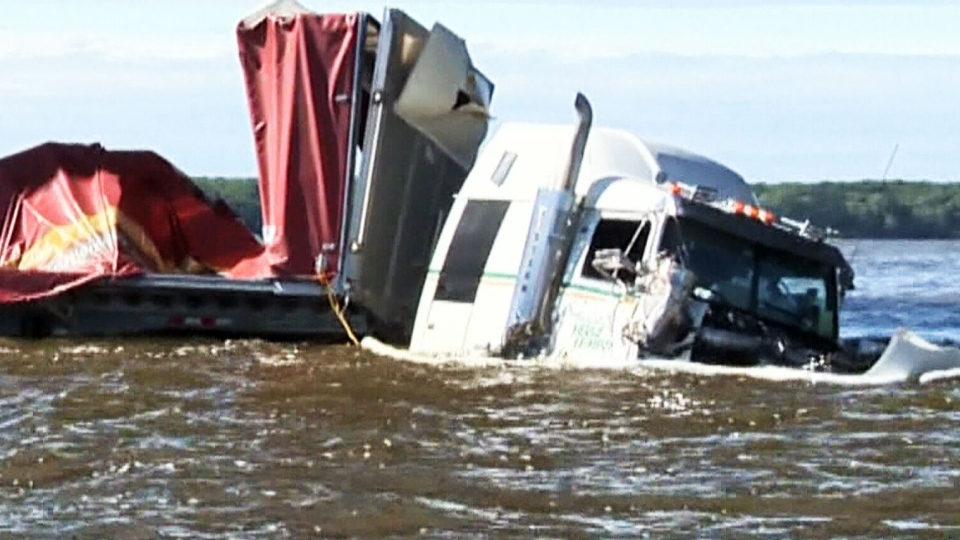It's a Team's Life

Submerged Survival: Tips for Surviving Water Emergencies
Following the recent events in Baltimore, we thought it would be best to brush up on the steps necessary to surviving a vehicle submersion. One of our greatest fears while crossing bridges and going over large waterways is a steer tire blowout causing us to lose control of the truck or another vehicle next to us having an adverse event and pushing us off the roadway with them. For this reason, we’ve always been on top of our tires and don’t hang around other motorists when crossing vulnerable roadways and/or bridges.
After digesting a wealth of information from articles, press releases, studies, and Coast Guard training manuals, we're going to highlight the optimal methods for surviving such an event.

- Open your windows. There is a 3 minute or less window of the electronics on your vehicle becoming inoperable after being submerged in water. Do not waste time or chance it trying to exit through your door. The unequal pressure being exerted on the vehicles exterior will make your door nearly impossible to open until it is completely submerged and there is no air left anywhere in the vehicle, which is not a situation you want to be in. Now even a small amount of water can create this pressure, like a flooded roadway. There is a small chance for you to open your doors upon water landing, which would be when your door is has not yet reached the water, so opening your windows will always give you the highest chance of survivability.
- Remove your seat-belt. Removing any restrictions from you getting out of the vehicle is important and often goes overlooked in panic. Being able to move about freely allowing for an immediate exit, should be a top priority.
- Refrain from attempting to use your cell phone. The time lost trying to call for help after hitting water decreases the chances of survival greatly. Place it somewhere tight along your body (if time allows) before exiting, for you to use when you reach a safer location is a better option. Fortunately, most smartphones are water resistant and can typically withstand being submerged for a short amount of time.
- Break the window. If you are not able to open the window completely or cannot open it at all due to loss of electronic controls, we highly suggest you pick up this glass break tool. It comes with a mount allowing you to keep it in a visible location for quick and easy access and is brightly colored. However, if you don’t have the room or want something smaller, this glass break key chain is just as effective and can be placed on your ignition key for emergency access. Both of these tools come with a seatbelt cutter as well. If you do ever need to use the glass break function, focus on the corners of the sides or rear window – these tools are not meant for your windshield. We'd like to highlight this great video that explains how these work.
- Exit as quickly as you can. The sooner you can get out of the submerged vehicle, the greater the chances of survival. Less than 3 – 5 minutes is the most ideal time frame.
- Stay calm and swim to safety. Panic uses energy and can hinder clear-thinking, therefore staying calm and focusing on swimming to safety can help you immensely. This would also be the time to signal for help if you can. If not, focus on controlled breathing and swimming to a safe point.
- Stay together. If you have a co-driver or passengers, best practice is to stay together and help each other get to safety.
It’s estimated that 3-11% of all drownings nationwide are by vehicle submersions. The greater percentage of fatalities typically involved trauma during the collision. So although the occurrence of this scenario is rare, it's important to acknowledge and prepare for it to increase the likelihood of survival. Remember, staying calm, acting quickly, and working together can make all the difference in surviving a vehicle submersion. Stay safe and be prepared.
Run Hard - Dream Big,
